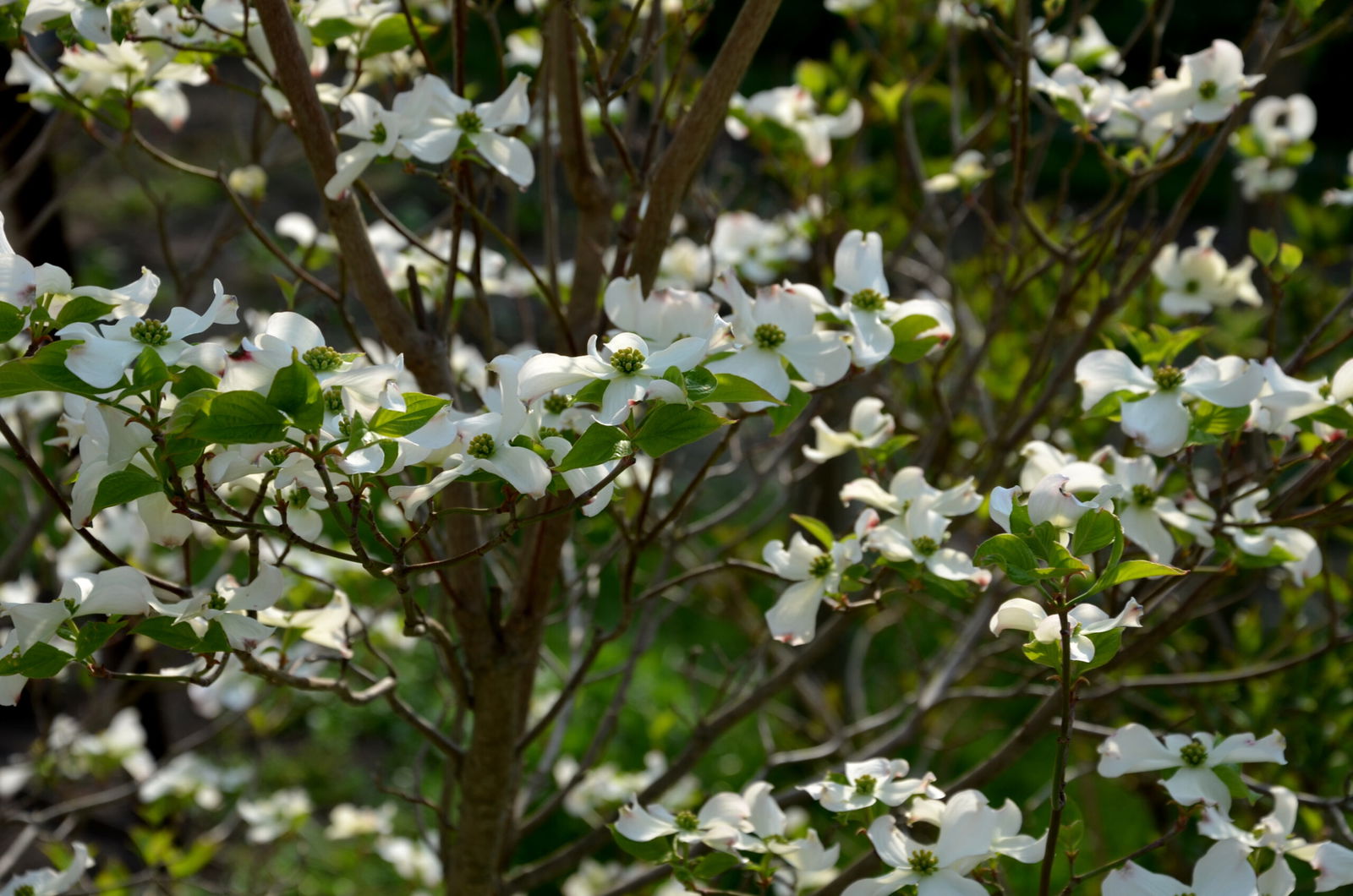Dogwood trees prove nature’s little spectacle

By My Courier-Tribune
“Few spring scenes are as spectacular as the annual display provided by dogwood trees,” said University of Missouri Extension horticulturist David Trinklein.
Inconspicuous for most of the year, these diminutive denizens of forests outdo their towering neighbors with spectacular exhibitions of color before most other species leaf out, Trinklein said in a press release.
According to the university extension release, the name “dogwood” goes back to at least the early 16th century. Some historians believe it was derived from the English “dagwood,” a shortened version of “daggerwood,” referring to the use of the tree’s hard, close-grained wood to make daggers and other weapons in medieval times. Another theory suggests the name comes from the tree’s tannin-rich bark, which was a key ingredient in a remedy for mange in dogs.
Flowering dogwood, or Cornus florida, is the state tree of Missouri and the state flower of Virginia and North Carolina. Dogwood’s flowers are clustered tightly in a tiny yellow bundle in the middle of the four showy, petal-like bracts. The latter are usually white, although there are pink and red cultivars.
Dogwood is adapted to a variety of climates and soils, but they naturally grow in moist, fertile soils high in organic matter, states the university release. Dogwoods should generally be treated as an understory tree, Trinklein said. It performs best when it receives some shade during the hottest part of the day. With proper care, however, it can grow in full sun. Dogwood can tolerate cold weather, but does not grow well where winter temperatures frequently fall below -15 degrees Fahrenheit. It cannot endure wet, poorly drained soils.
Pink dogwoods occur naturally, but named cultivars selected for landscape use typically have more intense color. “Cherokee Chief” sports deep ruby-red bracts. “Red Beauty,” a relatively new cultivar, produces dark rosy-red bracts on a semi-dwarf tree, states the release. Several lighter pink cultivars are also available.
Cultivars selected for variegated foliage include “Cherokee Daybreak,” “Cherokee Sunset,” “Hohman’s Gold” and “Golden Nugget.”
Trinklein suggests planting dogwoods no deeper than they were grown in the nursery, placing into soil that has been loosened to a depth of 8 to 12 inches.
“This area should be two to three times the diameter of the tree’s soil ball or production container. Organic matter such as compost or peat moss can help root growth when mixed with the soil around a new tree. Adding too much organic matter, however, can create a microenvironment that the tree’s roots will not want to leave,” states the release.
As with any newly planted tree, adequate water during the first two growing seasons is important for survival. Water thoroughly once or twice a week during dry periods, but avoid overwatering.
Trinklein said novice gardeners may apply too much fertilizer to landscape trees in an attempt to accelerate growth. A newly planted dogwood needs only about ¼ cup of a complete fertilizer fairly high in nitrogen, such as 12-4-8 or 16-4-8. Apply in spring and again in July. Evenly broadcast the fertilizer on the soil surface within a 2-foot radius of the trunk, he said.
Dogwood borer is the most common insect pest on established dogwoods. The larvae, which live in the cambial area, can kill branches or even entire trees. Prevent infestation by avoiding damage to the bark when using equipment such as lawn mowers or weed trimmer.
